50min Novice
How can we use a model to define an earthquake?
In this activity, students work collaboratively in small groups to investigate the earthquake cycle using a mechanical model. Mechanical model of the earthquake process uses a wood block, sandpaper, and rubber bands to show how "Forces, Faults, and Friction" interact as elastic energy is slowly stored as the rubber back stretches. Then releases an "earthquake when the block overcomes friction. This block-and-sandpaper model can be used to teach the concept of elastic rebound and how energy is stored and released. Earthquakes can provide a useful context for teaching or reviewing many basic physics concepts, such as sliding and static friction, forms of energy and conversion from one form to another, and the elastic properties of different materials.
Students' attention is captured through several short video clips illustrating the awe-inspiring power of ground shaking resulting from earthquakes. To make students' prior knowledge explicit and activate their thinking about the topic of earthquakes, each student develops a definition for an earthquake. Next, small groups of students combine their individual definitions through a collaborative process to create a consensus definition for an earthquake. Using an open-inquiry approach, students then investigate the Earthquake Machine model and compare their group's definition of an earthquake to the behavior of the model. Through this inquiry process students are asked to map the construct of an earthquake to the elements of the mechanical model. A whole-class discussion explores how the model is both like and unlike the actual phenomena of an earthquake and also emphasizes the flow of energy through the the system.
The "Videos" tab above includes a video on how to build the model and 2 video demonstrations on how to use the model.
Students will be able to:
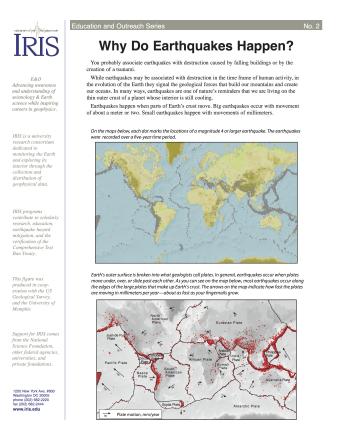
Many people associate earthquakes with destruction caused by falling buildings or by the creation of a tsunami. While earthquakes may be associated with destruction in the time frame of human activity, in the evolution of the Earth they signal the geological forces that build our mountains and create our oceans. This fact sheet provides an introduction to the causes of earthquakes.
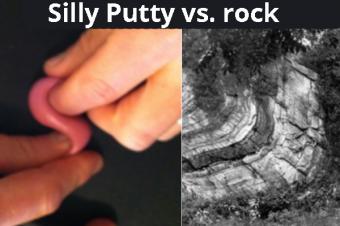
Using Silly Putty™ as an analogy, this activity extends student understanding of the deformation a rock undergoes as a result of stress, plus several factors that contribute to the behavior.
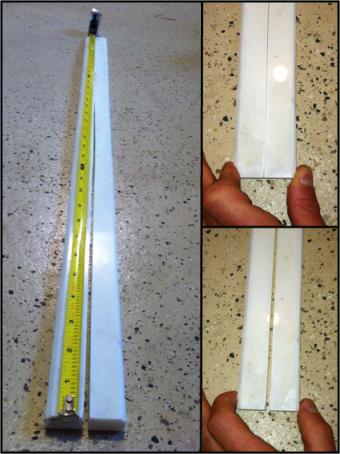
Through a demonstration lead by the teacher, the discrepant concept of rocks exhibiting elastic behavior is physically illustrated with an easily obtained, inexpensive model.
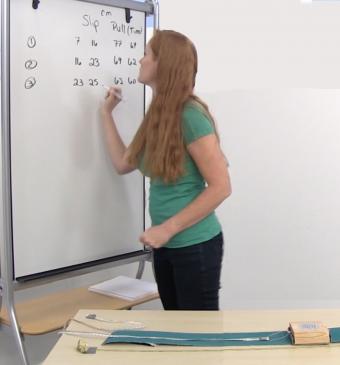
In this activity students use a mechanical fault model to collect empirical data, develop logical arguments about earthquake re-occurrence, and skeptically review other groups arguments.
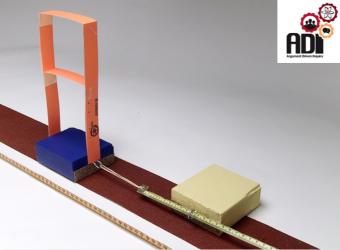
This Argument-Driven Inquiry (ADI) investigation allows students to explore and explain the occurrence of earthquakes and quantify the hazards they present. Students use a physical model, the earthquake machine, to explore the inputs and outputs of a natural system in Earth, to generate empirical evidence about the behavior of that system, and predict how that system may behave in the future.
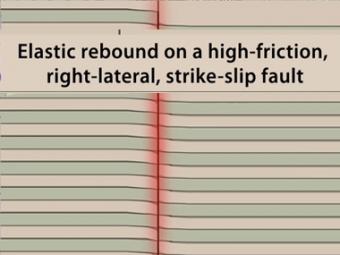
Animation shows the buildup of stress along the margin of two stuck plates that are trying to slide past one another. Stress and strain increase along the contact until the friction is overcome and rock breaks.
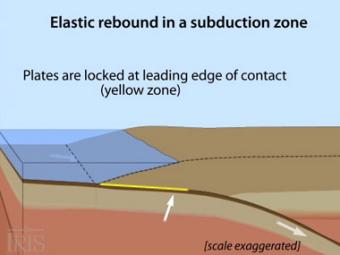
Oblique view of a highly generalized animation of a subduction zone where an oceanic plate is subducting beneath a continental plate. (See sketch below for parts.) This scenario can happen repeatedly on a 100-500 year cycle. The process which produces a mega-thrust earthquake would generate a tsunami, not depicted here.
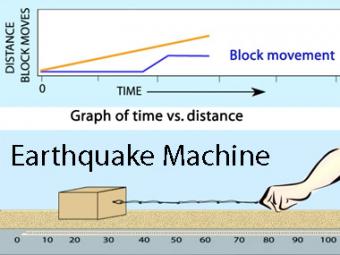
Animation of the single-block "Earthquake Machine", a mechanical model of the earthquake process using a wood block, sandpaper, and rubber bands. This model shows how "Forces, Faults, and Friction" interact as elastic energy is slowly stored when the rubber back stretches and then is rapidly released as the block jerks during an "earthquake".
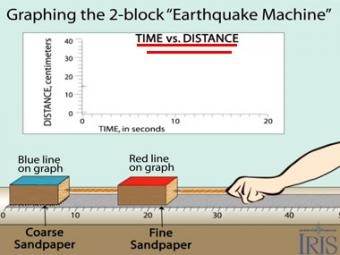
Graphing time vs. distance using the classic block-and-sandpaper "earthquake machine"
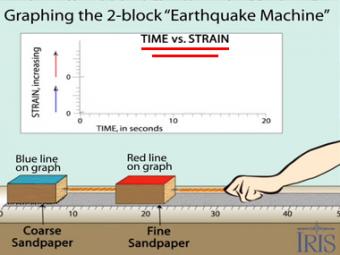
Graphing time vs. strain using the classic block-and-sandpaper "earthquake machine"
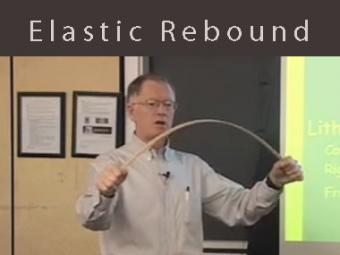
Video lecture about elastic rebound and brittle material in the crust using a yardstick as a mechanical analog. This demonstrates elasticity, brittle fracture, and why it is difficult to predict earthquakes.

This demonstration shows that rocks are elastic by squeezing a slit core of rock.
We encourage the reuse and dissemination of the material on this site as long as attribution is retained. To this end the material on this site, unless otherwise noted, is offered under Creative Commons Attribution (CC BY 4.0) license